Let us try an experiment. When you hear the word office, what do you see? A basic room with a desk and a chair? Pretty bland; walls in various shades of gray? Maybe a fern in a faux ceramic pot? You might also imagine a grid of cubicles in which anonymous coworkers pluck away at keyboards under stark fluorescent light.
It’s not exactly an environment that screams creativity. But for the past half century, these insipid layouts have been the standard for companies nationwide. Since 1964 and the advent of Herman Miller’s Action Office series — the semi-enclosed workspace product that launched America’s love/hate relationship with contract furniture — workers have been toiling in Dilbert-esque cubicles. Thankfully, the office landscape is beginning to evolve. Tech giants such as Google and Facebook years ago adopted a more open, unconventional approach to workspace design, and those ideas are now becoming mainstream.
The old-school style emphasized privacy and individual productivity. But the new model prioritizes the ideals of the creative class — that fast-growing, highly educated, well-paid segment of the workforce that values creativity, collaboration and the ability to customize.
In January, not-for-profit vision insurance company VSP Global partnered with Google Glass to provide prescription lens coverage for early adopters with VSP memberships. With the help of Dreyfuss & Blackford Architects, VSP overhauled its midtown prototyping space, The Shop (which had its grand opening in July), to make it more user-friendly and appealing to creative thinkers in and around Sacramento, which hasn’t exactly established a reputation as a city on the cutting edge.
“There is so much more to this city and its creative potential,” says Jay Sales, innovation strategist for The Shop @ VSP Global. “When it comes to recruiting and fostering new talent, having a dynamic and engaging workspace is crucial. Innovative spaces lead to new perspectives and, in turn, innovation itself.”
Designing a creative workspace is not just about asking, “Wouldn’t it be cool if … ?” The most innovative offices incorporate both form and function into flexible designs, integrating technology, capturing the company’s culture and creating a sense of play.
Now, with all this in mind, how might your company design its next space?
Here are some ideas to get you inspired:
What Do You See?
Most creative spaces in the region infuse one-of-a-kind or remarkable visuals into their office designs. Giving employees the option to look beyond their computer screens to a vibrant color scheme or spectacular city view plays a critical role.
Consider Misfit, an advertising company based in Pioneer Hall on Sacramento’s 7th Street. This building looks like a runaway relic from Old Sacramento, with its balcony out front, 30-foot ceilings, exposed brick and … a giant painting of Steve Jobs’ face?
“Because it’s so large and in the main seating area, it really makes a statement,” says David Flanagan, Misfit’s co-founder and executive creative director, who painted the portrait. “This is not a bank or a law firm but a full-on creative environment.”
But Jobs’ face is not the only one Flanagan wants his team to see. He ditched the classic cubicle model for a more communal space to spark high-energy collaboration.
“The moment you start throwing up walls, people tend to get real quiet and hibernate,” he says. “But now I can sit at my computer, hear their phone calls, see what’s on their desks, hear the guys in the creative department chit-chatting back and forth, and I’ll throw in my two cents. Ideas bounce around the office.”
If you do want walls, consider movable partitions like those at The Shop. “Everything in here is intended to be on wheels,” Sales says as he rolls one of the corrugated cardboard walls to create a makeshift presentation space.
This type of portability makes the space dynamic, allowing the team to customize on the fly. On various walls hang signs with slogans such as “Think Bigger” and “Innovate or Die.”
“It’s about adjusting, being agile and trying to run more like a startup,” Sales says. “We need to be seen not as an insurance company. We need to show the city we’re a company to work for.”
What Do You Hear?
Noise also contributes to a creative atmosphere. Why? Think about the last time you went to a library. Were you yelling over shelves or having group brainstorming sessions in the middle of the reference section? Not so much. The noise level shapes the energy level. And offices run on this same basic concept.
This is why at Misfit, you will most likely hear high-octane rock ‘n’ roll pumping from the speakers. But Flanagan likes to mix it up, too, so you might hear Led Zeppelin one minute and Michael Bublé the next. This is just another tool to promote creativity, though he admits that, “on occasion, we’ve had someone come from creative to say, ‘Turn it down.’”
Music is not your only option, though. If you are looking for a more subtle approach, you might follow the lead of companies like CBRE, which uses white noise machines to “dampen sound without being so distracting,” says Regional Sales Manager Tony Burnett.
Where Do You Sit?
For 42 years, CBRE was spread out on three floors in downtown Sacramento. But in April, the real estate company took over the 24th floor at 500 Capitol Mall. The new, 17,000-square-foot location overlooks the whole city, from the railyards to McClellan to the site of the upcoming arena. There are no bad views and no assigned desks, so the 103 employees can sit wherever, whenever.
“There are some who have regularly settled on one spot, but a significant number of people choose a different seat every day,” Burnett says.
This floating address approach was, of course, by design. By 2020, 50 percent of the U.S. workforce will be comprised of millennials, so executives wanted to create an interactive, plug-and-play environment.
“They won’t take a higher paying job if the environment is awful,” says Dave Brennan, senior managing director. “They don’t want those 6-foot cubes with stuffed animals hanging out of them, because that’s just depressing.”
CBRE also brought in ergonomic chairs and installed adjustable desks, so workers can either sit or stand, which helps keep the blood flowing.
With a portfolio that includes companies like Clif Bar, Tableau Software and Nike, digital agency BKWLD (pronounced “buckwild”) takes the concept of co-mingling to a whole different level. Based out of Old Sacramento’s historic Ebner Hotel, the agency shares its modern, rustic space with The Artery Foundation and ground(ctrl), a consumer marketing company co-founded by BKWLD CEO Ryan Vanni. Colored graphics on the walls differentiate the three companies.
How About Some Perks?
Okay. You have your sights, sounds and seating arrangements all mapped out. Now the fun part: bonus materials. Your options are endless. For example, exercise helps stimulate creativity, so you might want in-office treadmills that hook up to laptops like those at CBRE. Or because caffeine jolts the brain, how about a Starbucks machine like the one in BKWLD’s breakroom? Other ideas include filtered water, recycled air and natural light.
But of all the creative perks, the most common may be allowing employees to write on the walls. Literally. Not Post-Its. Not chalkboards. Those obsolete restrictive materials just do not allow for creative, spontaneous scribbling the way windows and walls do. “We set it up where not only is it OK, but drawing on walls is expected,” Flanagan says. “There are not too many offices where you can actually draw on the walls. Sounds like something a bad kid would do.”
Sick of missing out? Sign up for our weekly newsletter highlighting our most popular content. Or take it a step further and become a print subscriber — it’s both glossy and affordable!
Recommended For You
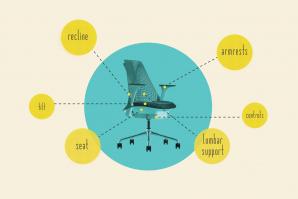
How Does Your Desk Chair Measure Up?
If you work at a desk, chances are you spend the majority of your day seated at its accompanying chair. There are alternatives available—including treadmills, exercise balls and kneeling chairs all designed for the desk-bound worker. But if that’s too avant gard for you (or your office), here’s a few things to consider when looking for a chair that won’t send you home hunched over and craving the fetal position. Then, tell us how you really feel.
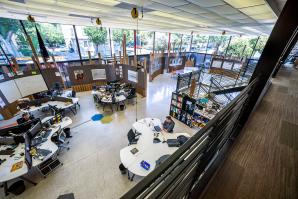
Creative Spacing
4 factors to consider
VSP wanted The Shop in Midtown to be flexible, buildable and breakable, a learning space and a prototype in itself (form following function). With that in mind, architects put wheels on the tables and on corrugated cardboard walls to make everything portable and adaptable.
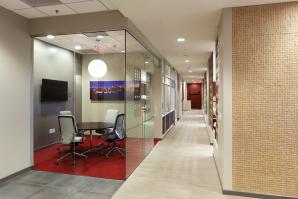
Farewell to the Corner Office
The next generation of workpace design
Walk into any coffee shop and it’s obvious that the place we call “the office” has changed. Many of the people sitting at tables are likely mixing laptops with lattes as they browse email and write reports. Some may be pitching a sale over coffee.

Home Office Tricks and Tips
How to design a comfortable and productive workspace
Technological innovations, workforce trends and entrepreneurial spirits are allowing more American workers to step away from cubicles and corner offices and into the comforts of their own homes.




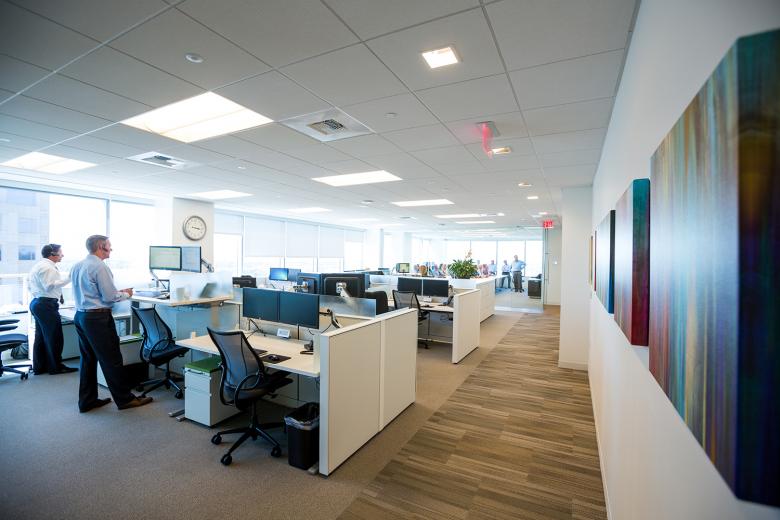
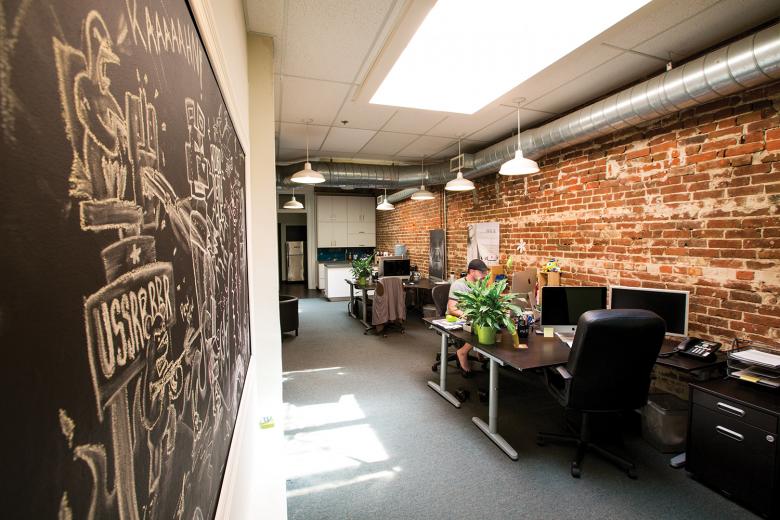
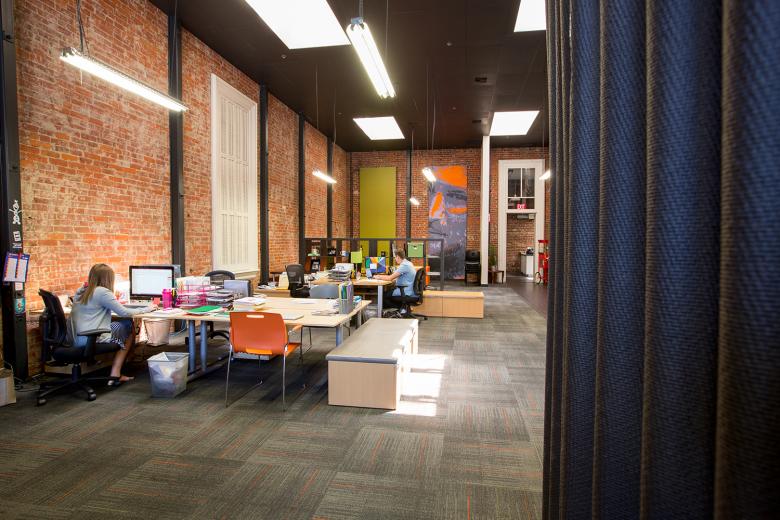
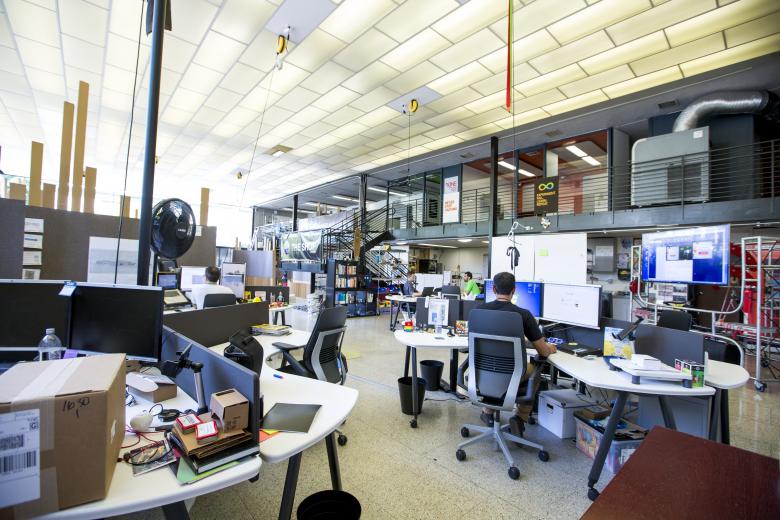
Comments
This article inspires readers to have critical/crucial conversations about how we want to be learning, creating, producing, accomplishing, collaborating with others in a work environment. In my various careers, each professional context was diverse, from the Entertainment Industry film locations & TV sets, nonprofits, colleges, conducting training at various venues, conversation-based research, to writing grants in my home office. I have worked in large offices with large windows and great views, to a large warehouse set designed for a weekly TV show production, or in a cubicle city. My HR background also informs the caveat that open spaces are not the best for introverts, those with certain intellectual and physical challenges, those who need to discuss confidential information on the phone, or those who need to have quiet and less distractions to work on budgets, reports and analytical assignments. I prefer the office of the future to provide choices for when we need to be in teams, and when we need to be alone. You do not have to be a "creative type" to create a flexible, functional and respectful work environment